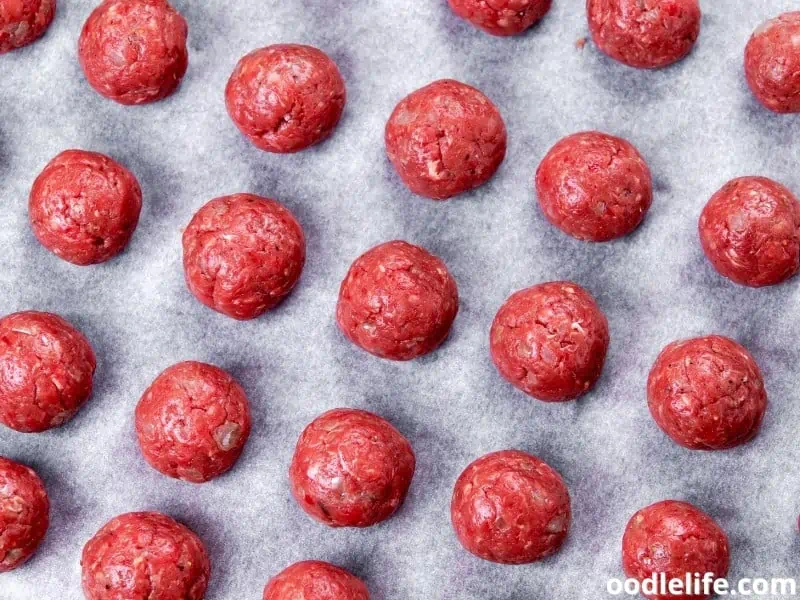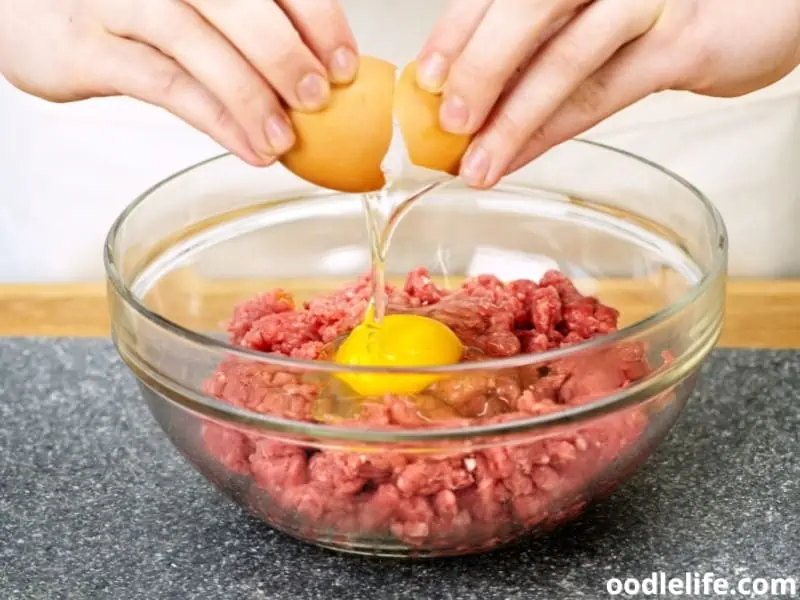How Many Satin Balls Should You Feed Your Dog?
Many dog owners have been able to help their undernourished canine friends recover their health thanks to the nutritional power of satin balls. Satin balls are raw meatballs prepared with different ingredients.
Satin balls are renowned for having beneficial weight-gain properties. They are helpful in abandoned shelter dogs, hyperactive dogs, and emaciated dogs to achieve and maintain a desirable weight.

However, many dog owners have wondered, “How many satin balls to feed my dog to help with rapid weight gain and improve immunity?” In this article, we’re going to address the question of how many satin balls to feed your dog and how you can make them.
How Many Satin Balls To Feed a Dog a Day?
Most dog owners give up easily on satin balls when they fail to witness noticeable changes within the anticipated time frame. Because each dog’s metabolism is unique, the number of satin balls needed will vary from dog to dog.
Satin balls are rich in calories and fat, have a simple recipe, and can be modified in many ways, rendering them a highly versatile dog food alternative.
To make satin balls suitable for your dog’s weight-gain needs, you may use various ingredients and modify the recipe accordingly.
The most common mainstay ingredients in satin balls are oatmeal and ground beef. You can give your dog the balls as the main course meal or introduce them as a supplement to its diet.
The number of satin balls you feed your dog daily depends on various factors. These factors include your dog’s current weight, desired weight gain, age, and breed.
If it’s your first time feeding your four-legged companion satin balls, we recommend you give him one ball daily. For a small dog, this portion will suffice. On the other hand, a medium-sized or big dog may need two satin balls every day until they are better.
However, we only suggest taking the slow route if your canine friend has sufficient time. If your dog requires rapid weight gain, you may need to raise the portion size appropriately.
Because satin balls work so well, it’s imperative that you keep a close eye on your dog’s weight. You don’t want your sweet dog to become obese. It’s advisable to stop giving your dog satin balls as soon as they reach the weight they should be.
You should wash your hands thoroughly after preparing a batch of satin balls, as they are primarily made of raw meat. Satin balls are used in most dog shelters as a weight-gain supplement.

How To Prepare Satin Balls?
Satin balls are a relatively inexpensive and highly effective way to supplement your dog’s diet with fat and calories to help them gain the necessary weight for a healthy life. We highlight a list of ingredients and a step-by-step guide on how to prepare satin balls at home.
Diana Carreon, a nurse practitioner, is said to have made this satin balls’ original recipe in 1996. The original recipe is still being used to date, but owners have introduced a variety of ingredient substitutions for their satin ball recipes with time.
Here is a recipe for preparing your dog’s satin balls:
- One large-sized box of oatmeal
- 10 pounds of ground beef
- One large-sized box of total cereal
- Ten unsweetened gelatin packets
- One 12-ounce jar of wheat germ
- Ten uncooked eggs
- 1 and ¼ cups of oil
- 1 and ¼ cup of unsulphured molasses
- Pinch of Salt
This is a scaled-up, mass-production version of the recipe that will yield more satin balls. If you wish to test a smaller batch before attempting larger quantities, reduce the recipe proportionately.

Step 1: Get the Ingredients
First, ensure that you have gathered and laid out all the necessary ingredients. Various substitutions can be made to the original recipe at the cook’s prerogative.
One such substitution we highly suggest is replacing the oil with no meaningful nutritional benefits with a special oil that adds to the satin balls’ overall benefits. As a source of omega-3 fatty acids, flaxseed oil is an excellent alternative.
Step 2: Combine Your Ingredients
Get a huge mixing bowl that is big enough to hold all of your ingredients and to allow you to mix them thoroughly without screwing up. Start with the dry ingredients, then add the oil of your choice, the eggs, and the meat portion.
Once you have added all ingredients, it’s time to mix thoroughly and ensure an even color and texture.
Step 3: Form Your Balls
Now that your combination is ready, you can begin shaping it into patties, balls, or whichever shape works best for you.
To ensure that your satin balls are uniform in size, you need to decide on your desired portion sizing. Your dog’s size and how you plan to feed your satin balls will dictate the preferred serving size.
Typically, small dogs will require smaller portions than big dogs; thus, you must appropriately shape the satin balls. If you intend to replace them for your dog’s meal, bigger portions are appropriate, whereas smaller portions are ideal if you want to use them as a meal supplement or a sweet treat.
Step 4: Freeze Servings for Future Use
You will need to freeze any portions that will not be used instantly once you’ve decided on the appropriate portion size. To save money, you can use freezer bags, but you can also use plastic wrap or another type of food wrap. These are extremely simple to reheat in advance and are ready for your dog to indulge when you want them to.
Step 5: Serve Your Satin Balls
As previously noted, you can use satin balls as a meal replacement, a treat between meals, or a supplement to your dog’s regular diet. Your dog will go crazy for these balls, no matter how you serve them.
Cleaning your dog’s bowl daily is essential because raw ground beef can harbor bacteria that could render your dog sick.
Any Recipe Alternatives for My Grains Intolerant Dog?
Your dog may have grain intolerance, and thus you may not include them in his diet. The original satin ball recipe contains grains, so options have been developed to permit grain-intolerant dogs to obtain the weight-gaining benefits of incorporating satin balls into their diets.
Dogs are usually allergic to corn, wheat, and soy but can also be intolerant to other plant-based grain substances. Even if your dog isn’t allergic to grains, it’s smart to look into alternatives for your satin ball recipe.
We have provided a recipe where you don’t need to use grains. Use the recipe below to meet your specific requirements:
- 10 envelopes of unflavored Gelatin
- Minced meat
- 1 ¼ cup of oil
- Ten raw eggs
- 0.5 kg of cheese
- 1 ½ cup of unsulphured molasses
- One pinch of salt

Parting Shot
The necessity to give your dog the balls can arise for various reasons. These dogs frequently have a history of being mistreated by their previous owners. Satin balls can be immensely beneficial when attempting to save an emaciated dog.
Excessively active dogs may also require satin balls, as their often-rapid metabolisms contribute to their diminutive appearance. Dogs with severe medical conditions may need satin balls as well, but you need to lower the number as their health improves.